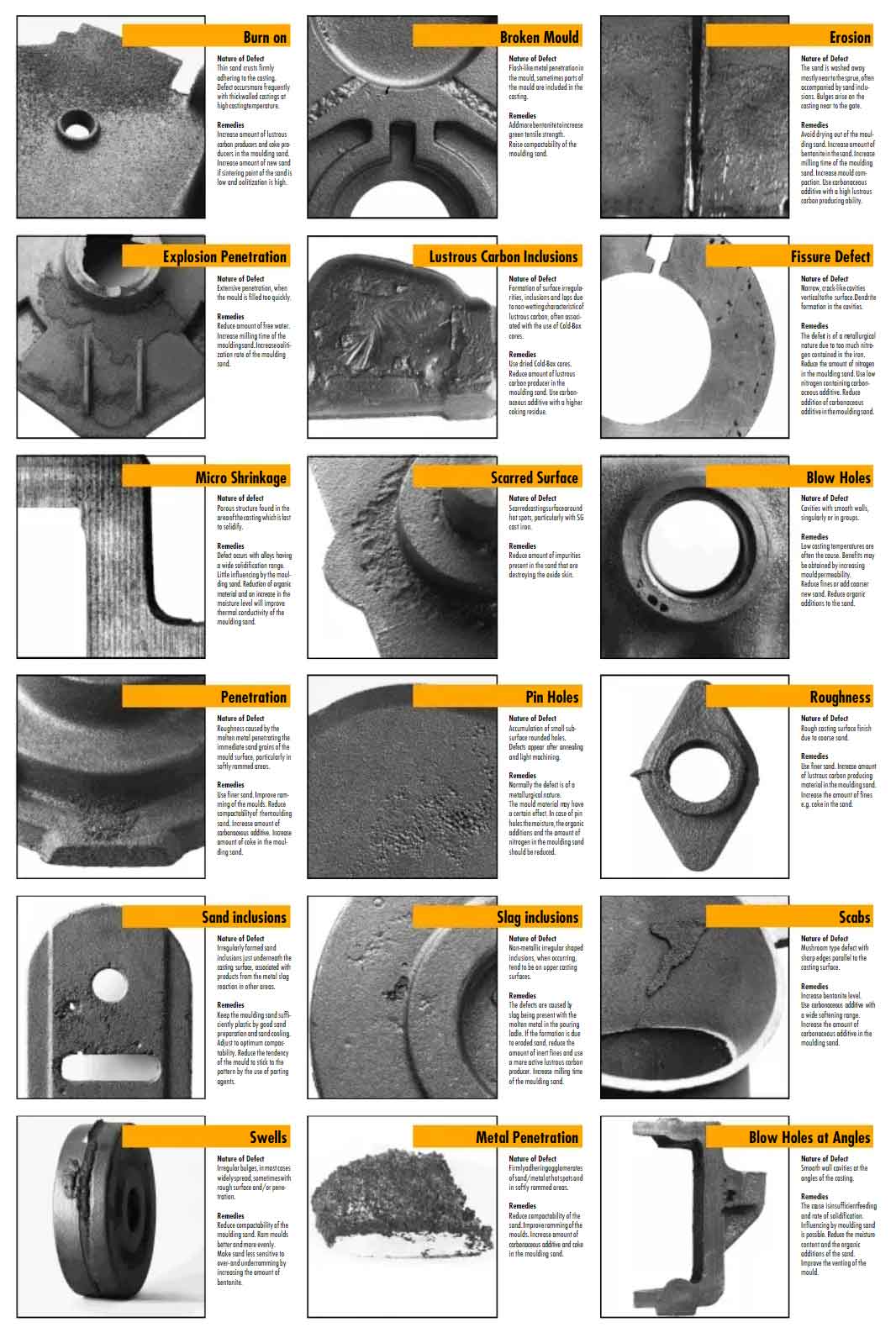
Learning from casting defects is crucial for continuous improvement in the casting process. Overcoming these defects involves a systematic approach that includes the following steps:
- Root Cause Analysis: When a casting defect occurs, conduct a thorough root cause analysis to identify the underlying reasons. This may involve reviewing process parameters, material properties, mold design, gating system, and cooling rates.
- Data Collection and Documentation: Record and document all relevant data, including process parameters, material properties, mold design, and any changes made during production. This information will be valuable for analysis and future reference.
- Defect Classification: Categorize the defects into different types (e.g., shrinkage, porosity, misruns) and severity levels to prioritize improvement efforts.
- Process Monitoring and Control: Implement real-time process monitoring and control to ensure consistent and repeatable casting quality. Use sensors and quality control tools to detect deviations and make adjustments as needed.
- Training and Skill Development: Invest in training and skill development for operators and foundry personnel to enhance their understanding of the casting process and the factors influencing defect formation.
- Quality Management System: Implement a comprehensive quality management system that includes regular audits, inspections, and corrective action plans to address issues promptly.
- Material Testing and Selection: Ensure that the casting material is tested and meets the required specifications. Optimize the alloy composition and melt treatment to minimize defects.
- Simulation and Modeling: Use casting simulation software to predict and analyze potential defects before actual production. Optimize process parameters and gating systems based on simulation results.
- Design for Manufacturability: Collaborate with designers and engineers to ensure that the part’s design is suitable for casting. Consider factors such as draft angles, wall thickness, and fillets to avoid potential defects.
- Collaboration with Suppliers: Work closely with material suppliers and other stakeholders to ensure the quality and consistency of raw materials.
- Continuous Improvement: Foster a culture of continuous improvement, encouraging employees to share ideas and suggestions for process enhancement.
- Benchmarking and Best Practices: Benchmark against industry leaders and adopt best practices to achieve higher casting quality and reduce defects.
- Testing and Validation: Perform testing and validation on critical components to verify the casting quality and mechanical properties.
- Feedback Loop: Establish a feedback loop between the foundry, customers, and suppliers to address issues and receive input for improvement.
By taking these steps, foundries can learn from casting defects and make necessary adjustments to improve the casting process, ultimately enhancing the quality and reliability of their castings.
